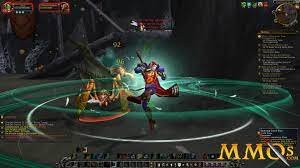Logo projectors, often referred to as gobo projectors, have revolutionized outdoor advertising, architectural lighting, and artistic installations. They offer a dynamic, cost-effective, and highly versatile method for projecting sharp, vibrant images onto almost any exterior surface. Creating stunning outdoor installations with a logo projector is a multi-step process that requires careful planning, the right equipment selection, and precise execution to ensure maximum visual impact and longevity.
Choosing the Right Equipment for Outdoor Projection
The first and most critical step is selecting an appropriate outdoor logo projector. Unlike indoor models, outdoor projectors must be robust, weatherproof, and powerful enough to overcome ambient light. Look for projectors with an IP (Ingress Protection) rating of IP65 or higher, which signifies protection against dust and jets of water. The wattage of the LED or light source is also paramount. Higher wattage is required for larger projections, longer distances, or areas with more competing light (like streetlights or neighboring businesses). For large-scale architectural projection or long-distance throws, a high-wattage projector (100W to 300W and up) is essential. For smaller, close-range projections onto sidewalks or entrances, lower wattage (30W to 80W) may suffice. The lens system is another key component. Different lenses offer various beam angles, impacting the size of the projected image at a specific distance. A zoom lens provides flexibility for installations where the projector-to-surface distance is fixed but the desired image size needs adjustment.
The heart of the projection is the gobo itself. Gobos are small templates made from metal, glass, or film that contain the artwork. For intricate logos, full-color designs, or those with delicate lines, a high-quality glass gobo is highly recommended as it allows for greater detail and multiple colors without the need for metal “tack-ons” or bridges that hold the design together. Metal gobos are durable and suitable for simpler, single-color text or graphic designs. The complexity of your design will directly influence your gobo choice and its cost. Always ensure the gobo size matches the projector’s gobo holder size for proper fit and focus.
Designing and Preparing Your Visual Content
Effective outdoor projection begins with effective design. The visual should be bold, easily legible, and instantly recognizable, especially since it will often be viewed by people in motion. Complex details and small text can become lost, particularly on uneven projection surfaces like brick or textured walls. Consider the colors in your logo. Bright, contrasting colors will stand out best, though multi-color glass gobos can replicate a brand’s palette beautifully.
Before installation, you need to calculate the precise placement of the logo projector. This involves using a projection chart or a simple formula to determine the necessary throw distance to achieve your desired image size. Incorrect positioning can result in an image that is too small, too dim, or suffers from severe keystoning, which is the distortion of the image when the projector is not perpendicular to the surface. While some projectors have digital or mechanical keystone correction, minimizing distortion through careful physical placement is always preferred for the sharpest results.
Strategic Placement and Installation Techniques
The chosen projection surface and location are vital to a stunning installation. Ideal surfaces are lighter in color (white or light grey) and as flat as possible, as dark colors absorb light and textured surfaces can break up the image. Buildings, smooth concrete walkways, and even water features can become captivating canvases. High-impact locations, such as building facades visible from a major street, sidewalks near an entrance, or courtyard walls, offer the best opportunities to capture attention.
Mounting the logo projector must be done securely. For permanent installations, the projector is typically affixed to a wall, pole, or rooftop using robust, weather-resistant mounting hardware. The mounting height should be high enough to avoid vandalism and obstruction but placed at an angle that minimizes keystoning. For optimal stability and safety, especially with heavy, high-wattage units, professional installation is strongly recommended. Power access is another practical consideration; the projector needs a reliable, protected outdoor power source, and all cabling should be safely concealed and rated for exterior use to comply with local codes.
Focus and Fine-Tuning for Maximum Impact
Once mounted and powered, the fine-tuning process begins. Insert the gobo into the projector, ensuring the orientation is correct. Due to the optics, the image on the gobo itself must often be placed in reverse so that it projects right-reading. Turn on the projector, and then meticulously adjust the focus ring until the image is perfectly sharp. This is a crucial step that can make the difference between a blurry mess and a crisp, stunning display. If the projector has a zoom feature, adjust it to achieve the desired size.
To create truly stunning installations, explore dynamic effects. Many modern logo projectors offer features like gobo rotation, which can add a captivating motion to your logo, drawing the eye more effectively than a static image. Some advanced models can cycle through multiple gobos or offer color-changing wheels. The timing of the projection is also essential. Since most outdoor projection is only visible from dusk until dawn, utilizing a built-in timer or light sensor ensures the installation operates during peak visibility hours, maximizing its impact and conserving energy. Regular maintenance, including cleaning the lens and checking the gobo for wear, will ensure the installation remains stunning over time.
By selecting the correct IP-rated hardware, creating a high-quality gobo, calculating the precise throw distance, and installing the unit securely and strategically, a logo projector transforms a passive surface into an active, eye-catching piece of art or a powerful advertising medium that lights up the night.




